Small business owners with expensive assets appreciate that thorough documentation safeguards operations and enhances regulatory compliance. We’re here to outline the best practices for meticulously documenting inspection results, ensuring clarity and traceability while offering insights into leveraging software tools to streamline the process. Emphasizing Accuracy and Detail
- Use Clear and Concise Language - Documenting inspections requires clear, concise language. Avoid jargon or overly technical terms that might confuse end-users. Instead, use straightforward language that captures the current state and any issues found. This will make the document accessible to everyone involved, from operators to upper management.
- Provide Comprehensive Details - Accuracy hinges on detail. Include all relevant information such as location, date, time, inspector's name, and the specific assets or areas inspected. Highlight the conditions under which the inspection was performed and provide exact measurements and readings where applicable. This level of detail ensures that records are thorough and valuable for future reference or during audits.
Ensuring Consistency and Uniformity
- Standardized Templates and Forms - Standardized templates or forms help maintain inspection consistency. These should include predefined sections for each aspect of the inspection, ensuring that nothing is overlooked. Standardization facilitates easy comparison over time, helping businesses identify patterns or recurring issues.
- Consistent Terminology - Using consistent terminology throughout all documentation prevents misunderstandings and misinterpretations. To ensure uniformity in recording findings, develop a glossary of terms or a reference guide that all inspectors are familiar with.
Enhancing Traceability and Accessibility
- Digital Documentation - Transitioning from paper-based to digital documentation is a game changer. Digital records are easier to store, access, and share. They enhance traceability by providing search functionality, enabling quick retrieval of past inspection records when necessary. Furthermore, digital records can be directly linked to specific assets or locations, streamlining the process of monitoring assets history.
- Real-Time Updates - Documenting findings using mobile devices or tablets in real-time ensures no details are lost or forgotten. This practice provides immediate feedback and allows for quicker decision-making, especially in dynamic environments where immediate corrective actions might be required.
Utilizing Visual Evidence
Photos or videos in inspection documents provide visual context to the written findings. This can be particularly useful in highlighting defects, damages, or any areas of concern, offering a comprehensive view that pure text may not convey.
Elevate Your Inspection Documentation with The Checker
Meticulous documentation of inspection findings is vital for maintaining safety, compliance, and efficiency in industries with valuable assets. By embracing best practices such as clarity, consistency, traceability, and visual aids, businesses can ensure their inspection processes are robust and informative.
The Checker provides cutting-edge inspection software to revolutionize documenting and managing inspection findings. Our software enables businesses to create standardized digital forms, capture real-time data instantly, and effortlessly integrate multimedia evidence. With The Checker’s user-friendly platform, documenting inspections becomes a streamlined process that enhances accuracy, ensures compliance, and supports informed decision-making. Trust The Checker to be your partner in maintaining integrity and efficiency.











